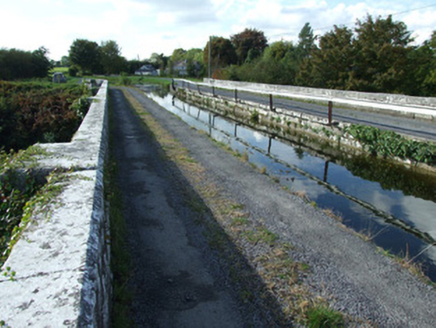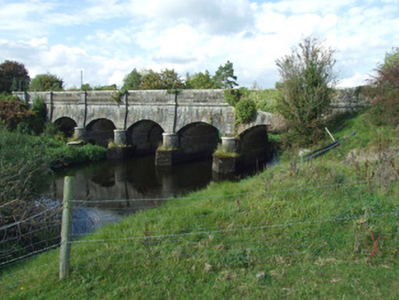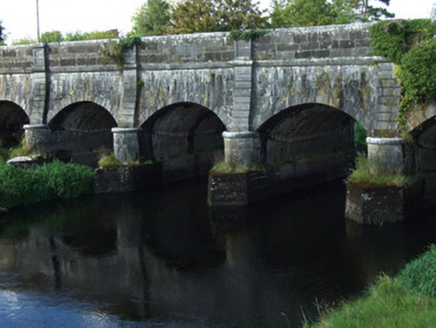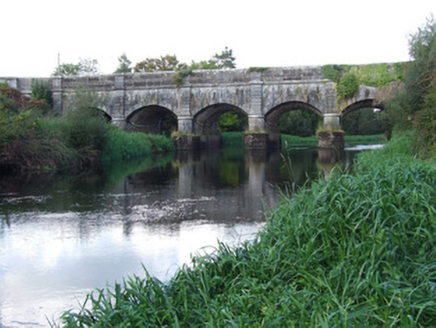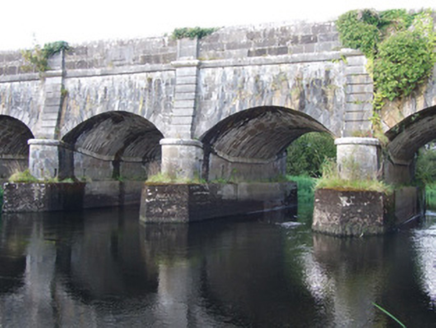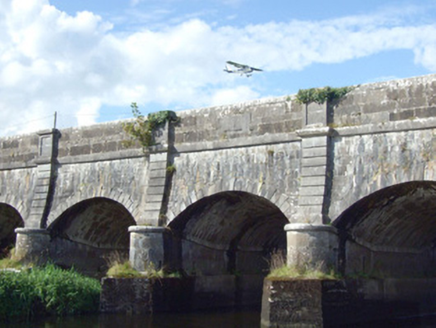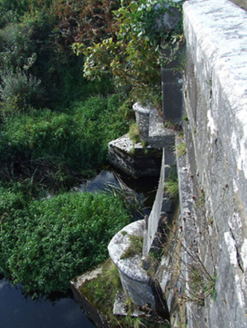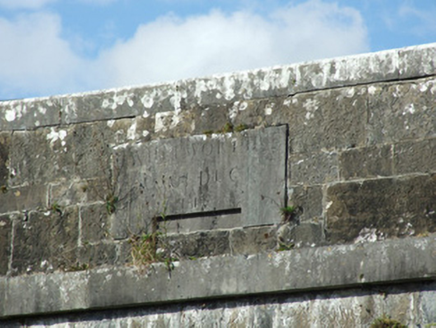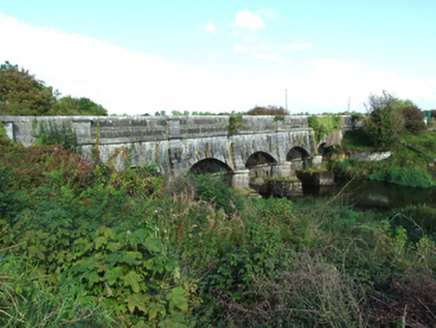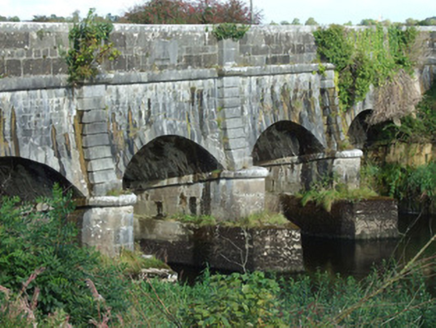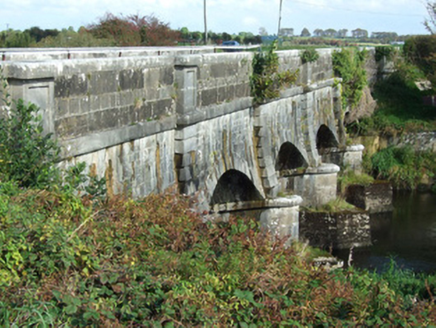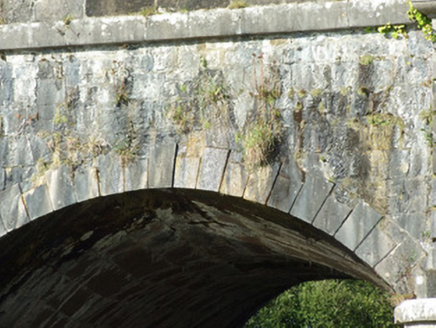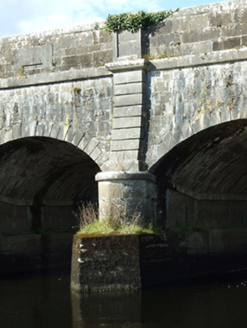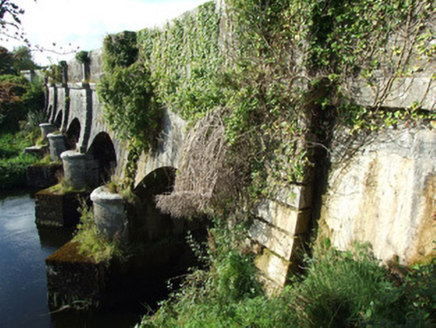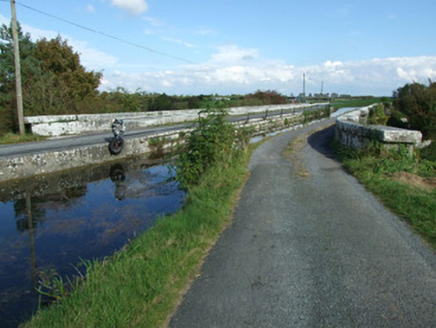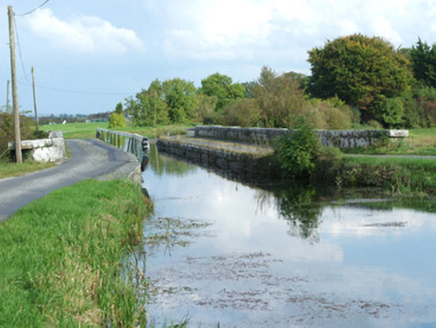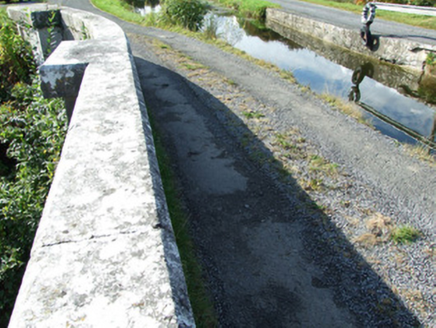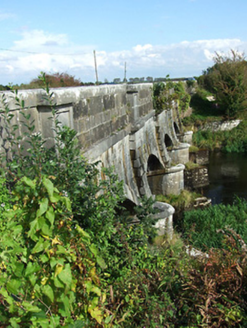Survey Data
Reg No
13402337
Rating
National
Categories of Special Interest
Architectural, Artistic, Technical
Original Use
Aqueduct
In Use As
Aqueduct
Date
1810 - 1820
Coordinates
223163, 260114
Date Recorded
02/09/2005
Date Updated
--/--/--
Description
Five-arch aqueduct carrying Royal Canal and towpaths over the River Inny, built c. 1815, with spandrels, abutments and piers battered to base in concave curve. Squared and roughly dressed limestone spandrels and abutments with cut stone string courses at towpath deck level. Abutments splayed outwards to base of arches with cut stone string course at impost level. Segmental-headed arches with dressed ashlar limestone block-and-start voussoirs. Dressed ashlar limestone masonry to arch barrels. Dressed ashlar limestone parapets with bevelled cut stone coping over. Cut limestone name plaques to south parapet, one to interior face and one to exterior face. Rounded dressed ashlar limestone cutwaters to both upstream (north) and downstream (south) elevations having dressed limestone string courses over. Modern concrete cutwaters on triangular-profile to base of piers to both elevations. Squared and dressed channel-jointed rusticated ashlar limestone pilasters over piers rising to cut stone string courses at towpath level, and to ashlar limestone piers over at parapet level having cut stone coping with bevelled edges. Recessed square-headed panels to piers at parapet level. Dressed limestone retaining walls to canal banks. Located to the northeast of Abbeyshrule.
Appraisal
This magnificent large-scale aqueduct carries the Royal Canal and associated towpaths over the River Inny, a distance of 165 feet. It is arguably the single most impressive feature along the entire length of the Royal Canal (from Dublin to Cloondara) and is the most important element of the nineteenth century engineering heritage of County Longford. It is robustly constructed in excellent quality limestone masonry, while the extensive ashlar and cut limestone trim adds substantially to the aesthetics and its architectural character. The bases of both the main elevations are battered in a concave curve to counteract the outward thrust, which creates a robust, but highly pleasing and elegant composition. This bridge survives in excellent condition, which is testament to the quality of the original construction and the skill of the stonemasons and engineers involved. The stone used in the construction was reputedly quarried at Castlewilder, which is located a short distance to the northeast. This fine structure was built to designs by John Killaly (1766 – 1832), the engineer responsible for the construction of the Royal Canal between Coolnahay to Cloondara. Construction commenced in 1814 and it was completed in 1817. It was commissioned by the Directors General of Inland Navigation, who took over responsibility for the Royal Canal following the dissolution of the Royal Canal Company in 1813. The contractors involved in the construction were Henry, Mullins and McMahon. It is probably named after Lord Charles Whitworth (1752 - 1825), 1st Baron Whitworth, who was Lord Lieutenant of Ireland (between 1813 – 17) at the time of construction. A plaque to the inner face of south parapet reads ‘This Aqueduct with the entire Royal Canal Extension 24.5 miles in length, having 21 locks, 38 bridges, and 40 tunnels, with several harbours, quays, and other works of masonry was designed by John Killaly Esq., Engineer to the Director General of Inland Navigation and executed under their Direction in the short space of 3 years by the undertakers, Henry, Mullins and McMahon’. This fine aqueduct is a notable addition to the built heritage of Longford, and represents one of the most impressive features of its type in Ireland. It cost c. £5,000 to construct.
